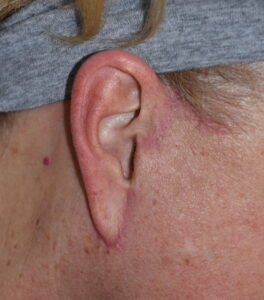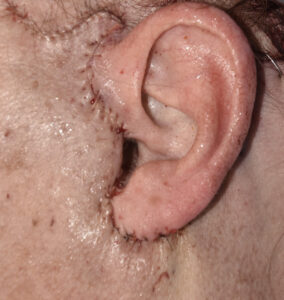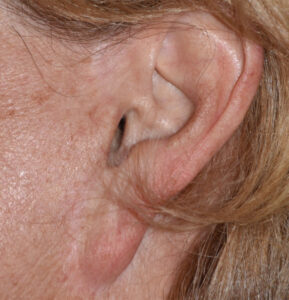
There are numerous techniques in facelift surgery that are specifically used to prevent such ear deformities. These include the use of SMAS flaps under the skin, where the tension is placed, and avoiding over resection of the redundant skin flap as it is repositioned up along the ear. These methods are very effective in preventing this type of earlobe deformity. But occasionally I will see another surgeon’s facelift patient who has one or both pixie ears and the question then is what is the best method to correct it.
In the December 2020 issue of the Aesthetic Surgery Journal an article was published on this topic entitled ‘An Update on the Posterior Earlobe/Concha Mastoid Suspension Suture to Correct “Pixie Ear” Following Facelift: Review of 40 Cases’. The authors had previously published in 2018 an article that described a preventative technique consisting of posterior earlobe rotation flap (PERF) and concha-mastoid suspension suture (CMSS) to correct pixie ear formation in revision facelift surgeries. In this paper s total of 25 secondary and 15 tertiary facelift surgeries were performed over a three year period. A combination of posterior earlobe rotation flaps and concha-mastoid sutures were used on each side of the facelift.
At one year after surgery no pixie ear deformities were seen. Auricular displacement was seen twice and hypertrophic scarring once. The total rate of earlobe deformities in this study, therefore, was 3.75% (auricular displacement: 2.5%; hypertrophic scarring: 1.25%). Based on their prior experience with the preventative benefits of PERF and CMSS techniques in primary facelifts, the techniques are also effective at restoring earlobe distortion in secondary or tertiary facelift cases.

Dr. Barry Eppley
Indianapolis, Indiana



